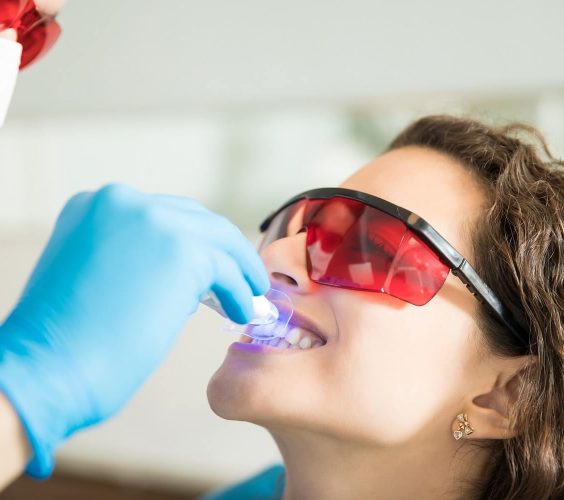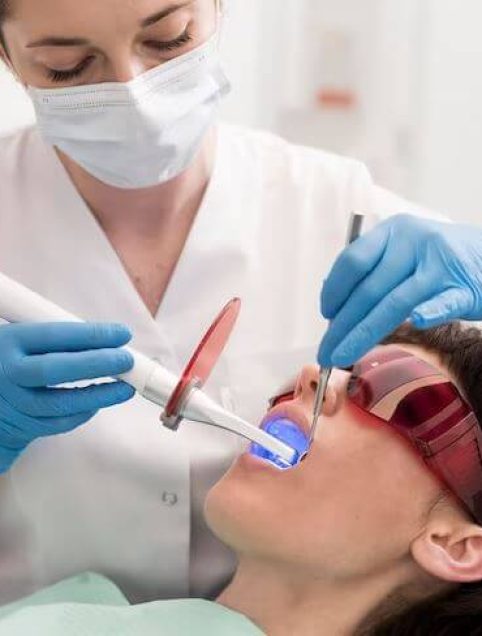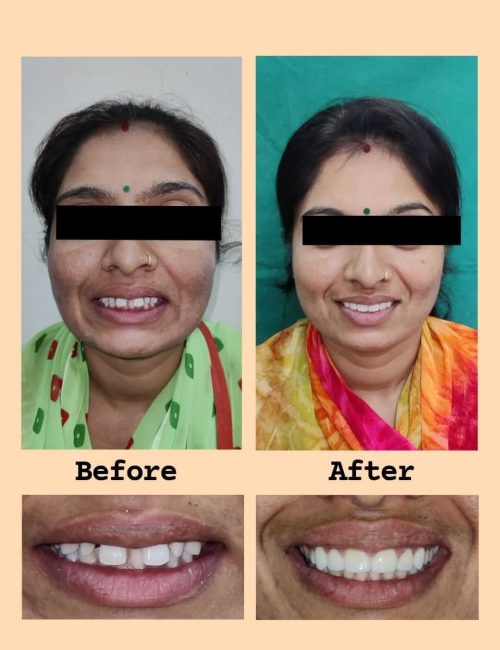Revitalize Your Smile with Our Teeth Whitening Services

Overview
Teeth Whitening & Bleaching
Teeth whitening and bleaching are cosmetic dental procedures that help to remove stains and discoloration from the teeth, resulting in a brighter and more youthful-looking smile. The process involves the use of a bleaching agent that is applied to the teeth, either in-office or at home with custom-made trays. It is a safe and effective way to improve the appearance of your teeth and boost your self-confidence.
However, it’s important to note that teeth whitening and bleaching may not be suitable for everyone, and it’s best to consult with a dentist to determine if it’s the right option for you.
Revitalize your smile with our professional teeth whitening and bleaching services for a brighter and confident you
Benefits of Teeth Whitening & Bleaching
Here are some benefits of teeth whitening and bleaching that you can add to the service page:
Improves Confidence
A brighter and more beautiful smile can boost your self-confidence and make you feel better about yourself.
Long-lasting Results
With proper care and maintenance, the results of teeth whitening and bleaching can last for months or even years.
Non-invasive
Teeth whitening and bleaching are non-invasive and typically painless, making them an excellent option for those who want to enhance their smile without undergoing extensive procedures.
Enhances Appearance
Teeth whitening and bleaching can remove stains and discoloration caused by age, smoking, or certain foods and drinks, resulting in a more youthful and attractive appearance.
Causes of tooth discoloration
There are several reasons why teeth can become discolored, including:
Food and Drink
Consuming certain foods and drinks like coffee, tea, red wine, and dark-colored fruits can stain the teeth over time.
Tobacco Use
Smoking and using other forms of tobacco can cause yellowing of the teeth and other forms of discoloration.
Poor oral Hygiene
Neglecting to brush and floss regularly can lead to a buildup of plaque and tartar, which can cause the teeth to appear yellow or dull.
Aging
As we age, the outer layer of tooth enamel naturally thins, revealing more of the yellowish dentin layer underneath.
Medications
Certain medications, such as antibiotics, antihistamines, and high blood pressure drugs, can cause tooth discoloration as a side effect.

Types of Teeth Whitening Treatments Available
There are several types of teeth whitening treatments available, including in-office professional treatments, at-home treatments with custom trays, over-the-counter whitening strips, and natural remedies such as charcoal and baking soda.

What to Expect During & After the Procedure
During a teeth whitening or bleaching procedure, you can expect the dentist to first thoroughly clean your teeth to remove any plaque or debris. Then, a protective gel or rubber shield will be applied to your gums to protect them from the bleaching agent. The bleaching agent is then applied to your teeth, and a special light or laser may be used to enhance the results. After the procedure, you may experience some temporary tooth sensitivity, but this typically subsides within a few days. It’s important to maintain good oral hygiene and avoid consuming staining substances, such as coffee or red wine, to prolong the results.
Post-Treatment Care & Maintenance Tips
After teeth whitening or bleaching, it is important to take proper care of your teeth to maintain the results. This includes avoiding foods and drinks that can stain your teeth, such as coffee and red wine, and brushing and flossing regularly. You may also need to use touch-up treatments at home or schedule periodic touch-up appointments with your dentist to keep your teeth looking their best. Your dentist can provide specific instructions for post-treatment care and maintenance based on your individual needs.

